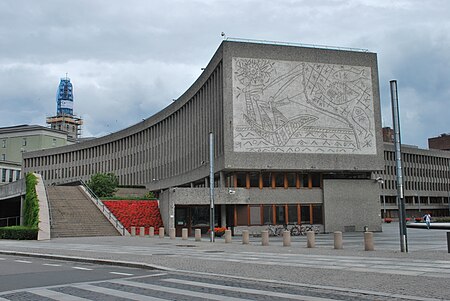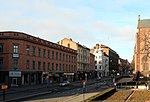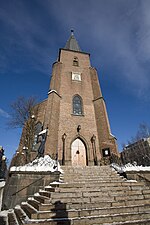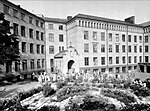Y-Block
2011 Norway attacksBrutalist architectureBuildings and structures demolished in 2020Buildings and structures in OsloDemolished buildings and structures in Norway ... and 3 more
Government buildings completed in 1970Government buildings in NorwayOffice buildings in Norway

The Y-Block was a building in Oslo, Norway, extant from 1970 to 2020. The building, designed in a Brutalist style by Erling Viksjø, was part of the Regjeringskvartalet (Government Quarter) in the centre of the city. It featured two murals by Pablo Picasso. It was one of few sites with murals designed by Picasso, along with the Château de Castille in France and the Col·legi d'Arquitectes de Catalunya in Barcelona.The building was damaged during the 2011 Norway attacks. In 2020, following intense public debate, the building's murals were removed and the remaining structure was demolished. The murals are planned to be incorporated into a replacement building.
Excerpt from the Wikipedia article Y-Block (License: CC BY-SA 3.0, Authors, Images).Y-Block
Akersgata, Oslo St. Hanshaugen
Geographical coordinates (GPS) Address Nearby Places Show on map
Geographical coordinates (GPS)
| Latitude | Longitude |
|---|---|
| N 59.916 ° | E 10.7458 ° |
Address
Akersgata 44
0180 Oslo, St. Hanshaugen
Norway
Open on Google Maps









